Arjun Yadav
KENKEN
Mar 15, 2022

Note: This post was last edited on Aug 26, 2022.
KENKEN is a Japanese math puzzle that combines sudoku with arithmetic operations (as if sudoku wasn't hard enough!)
Here's an example of what the simplest possible KENKEN looks like[1]:
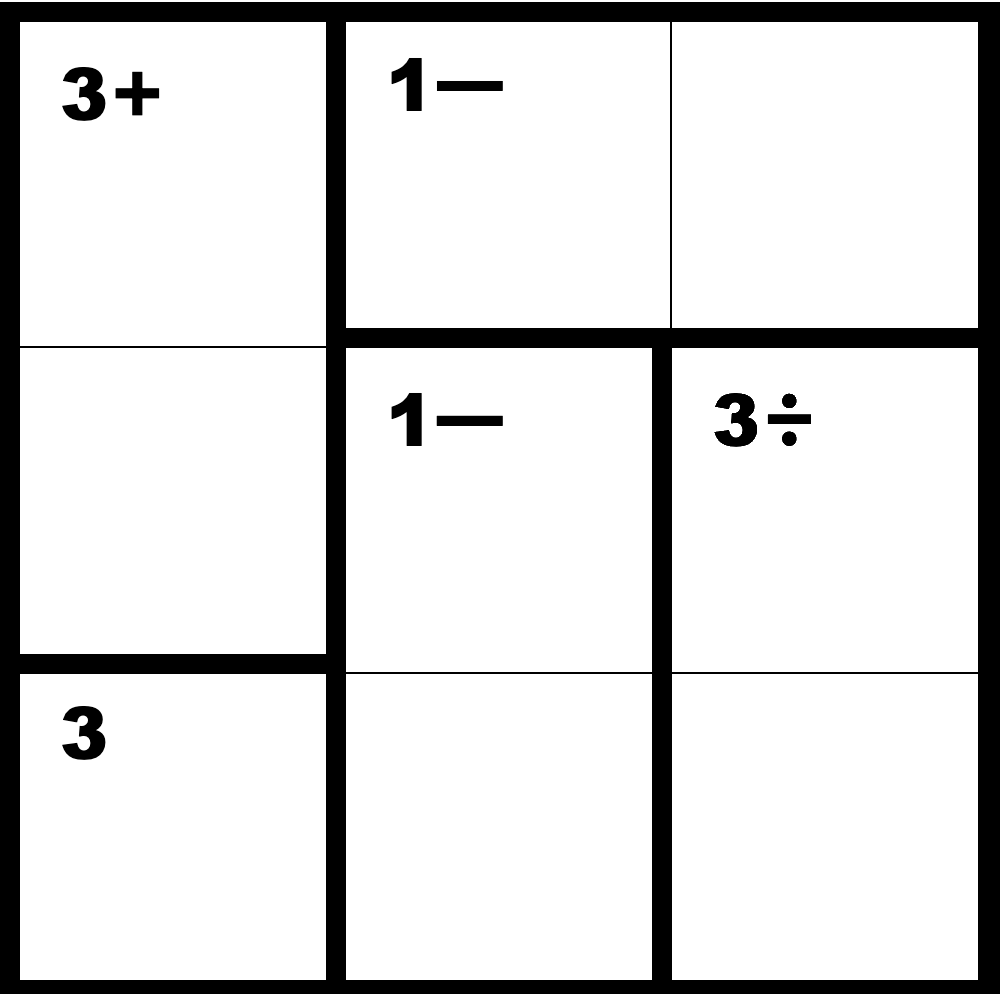
The first thing you should do[2] when you're presented with a KENKEN puzzle is to fill any empty squares with the number in the top left corner (these cells are called "freebies"):
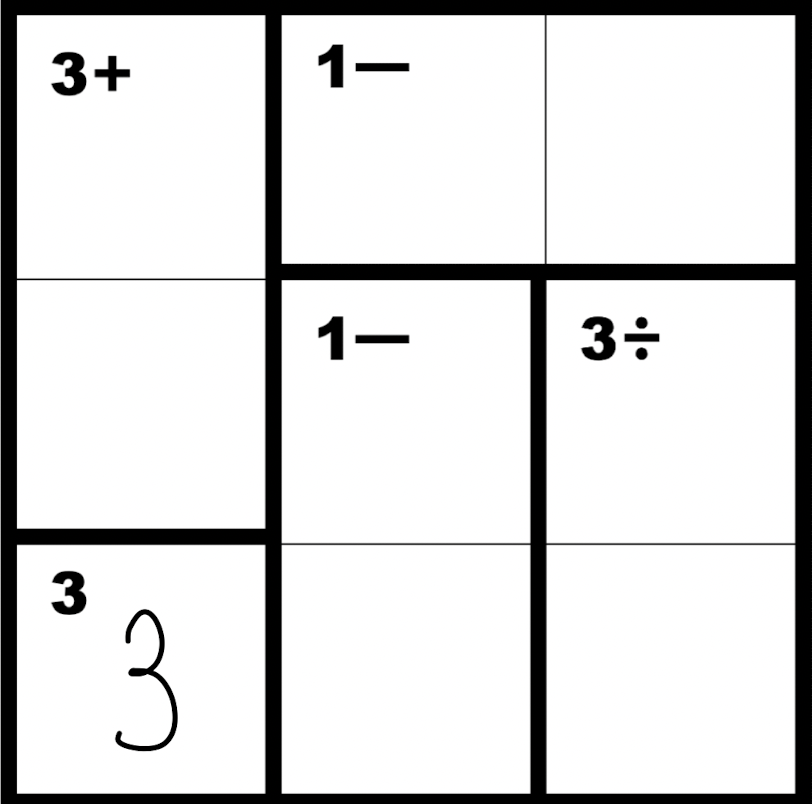
Alright, now what do we do? Notice the region with a "3÷". This is called a cage and we're supposed to fill two numbers that, when divided, equal 3 (the order doesn't matter).
There's an infinite number of possibilities for that! Thankfully, for an n x n puzzle, we can only use the integers from 1 to n.
So, the only possibility is 3 and 1. We borrow a rule from sudoku that says we can only have one of each number in every row and column and so, we place it as follows:
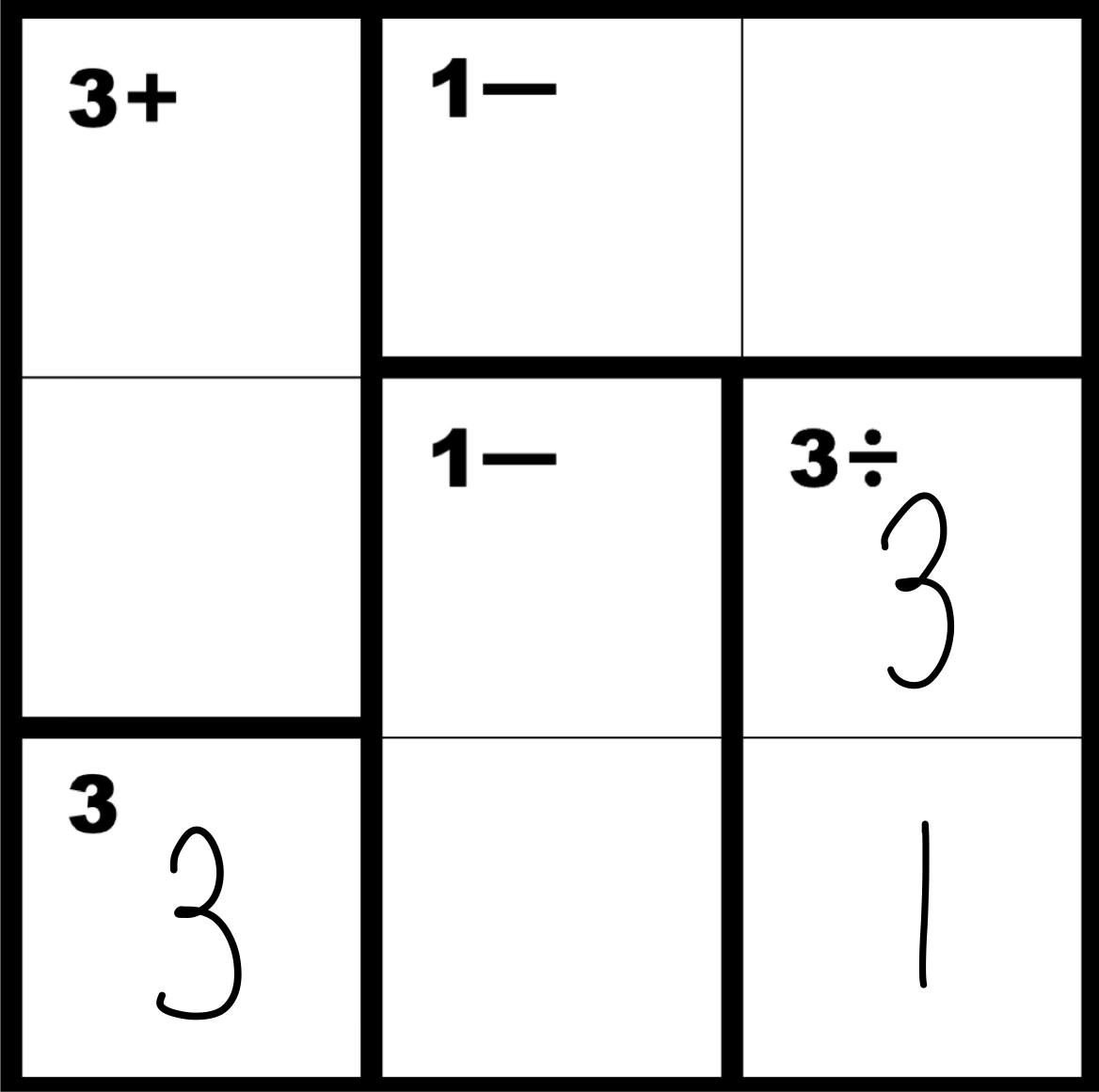
The last cage we have in the bottom section of the puzzle is the "1-" cage. Well, we could do 3 and 2, but there's no position for 3 that doesn't violate the sudoku rule. The last possibility is 1 and 2, so we write that in:
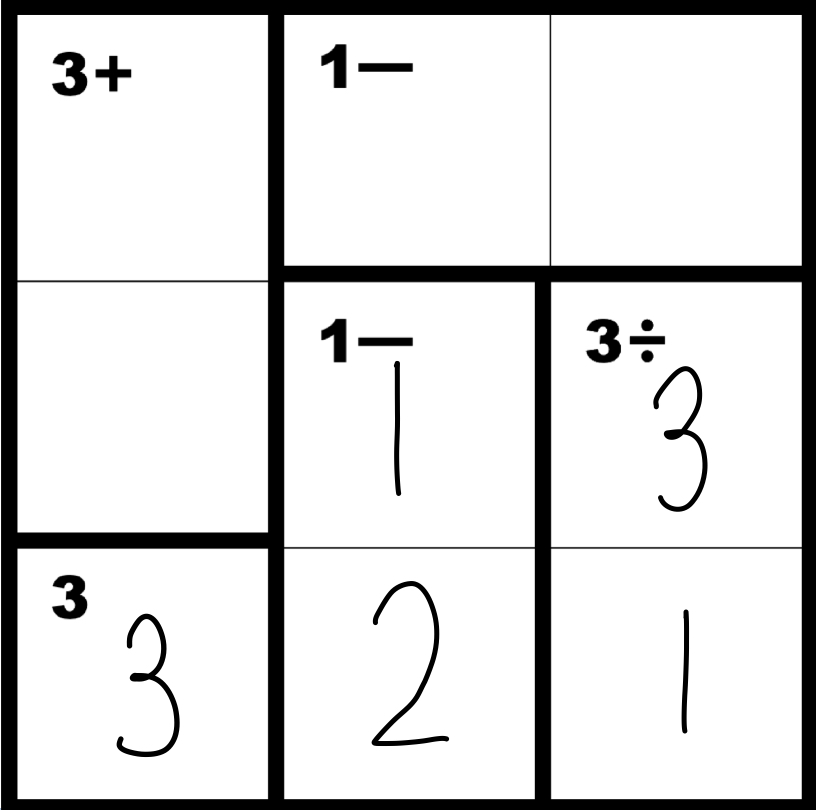
Look at the middle row, without even seeing what the cage is about, we fill in 2 as no other number can come there! The same strategy can be applied in the first column to the left and we fill in the 1:
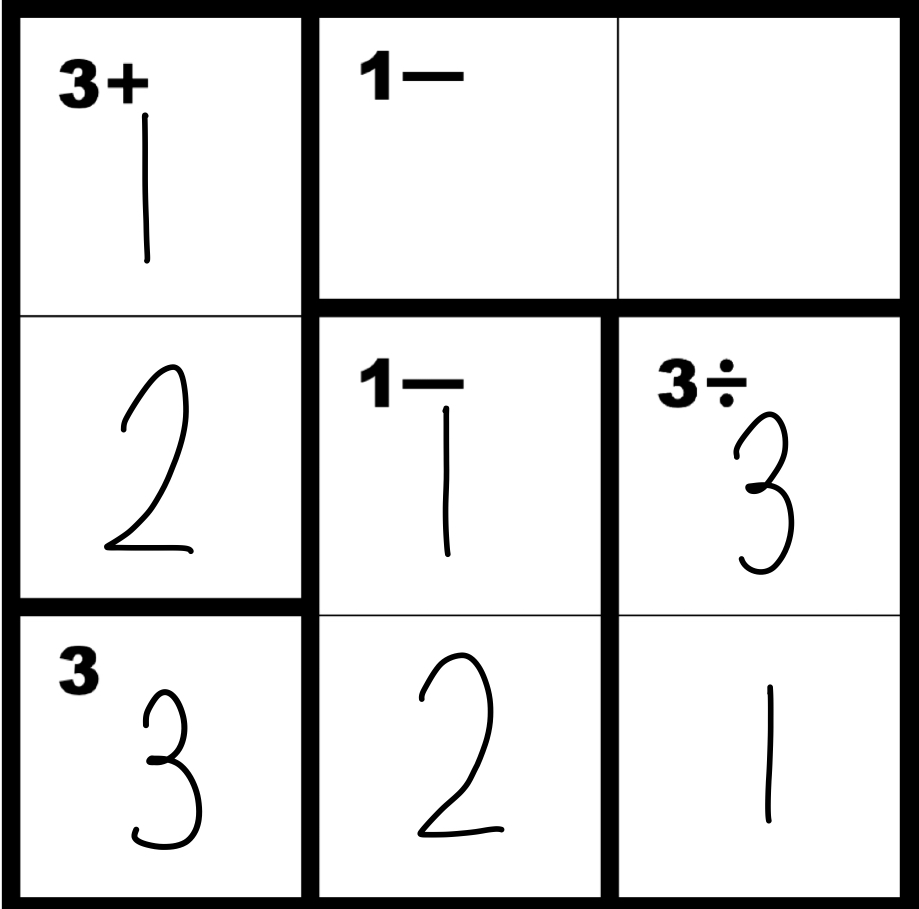
We can employ the same time-saving strategy for the last cage, and we're done!
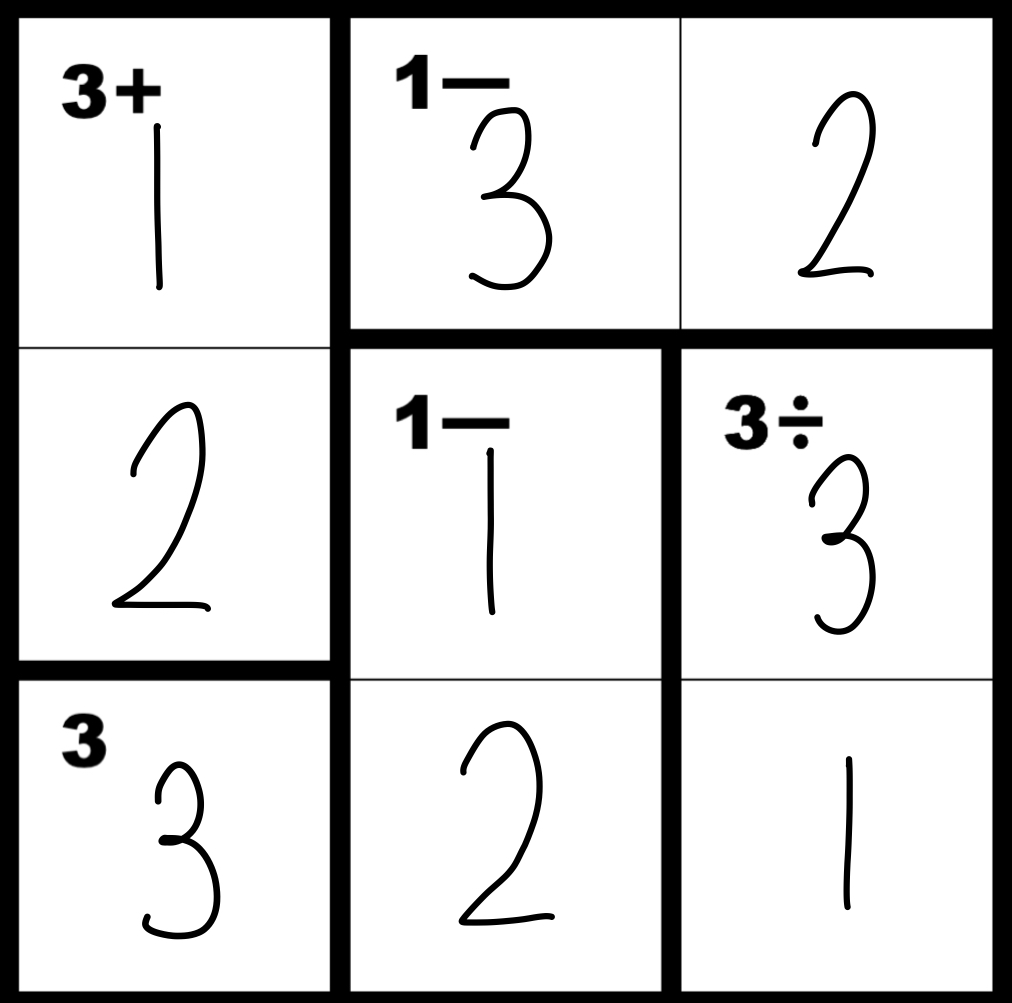
As a small exercise, try out this 4x4 puzzle!
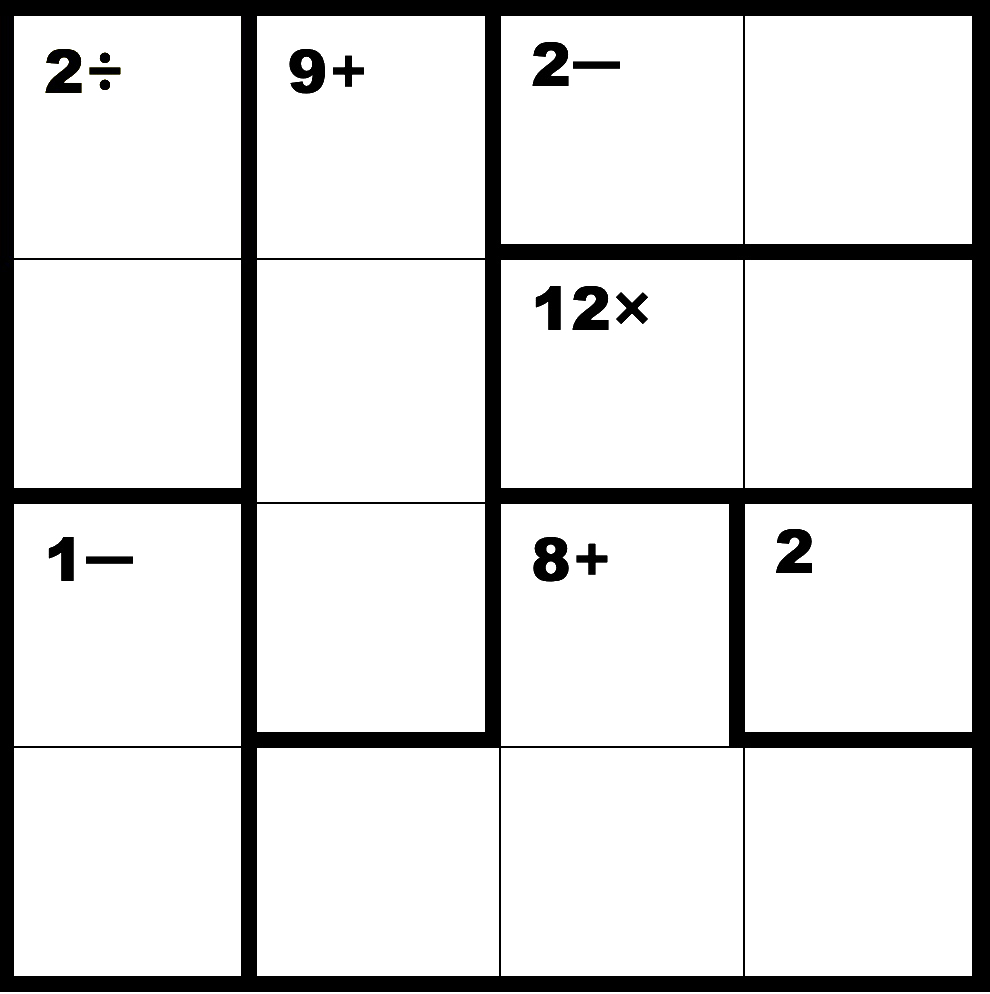
Here are a few hints:
- Notice the "9+" cell. If we take the possible integers (4, 3, 2 and 1), they add up to 10. In either a column or a row, all the possible numbers must be used, so the sum must be 10.
- Don't focus your energy on "big cages". These will come to you later on as the number of possibilities decreases.